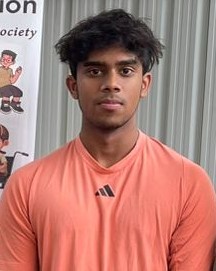How Neurodivergent Minds Transform Education
17 June 2025 | 5 min
Varun Anand

About Me
I am Varun Anand, an 11th-grade student from Candor International School pursuing the IBDP program. Beyond my academic pursuits, I am passionate about watching basketball and practicing the piano, which bring balance and joy to my life. I love the excitement of basketball games and the creativity I can express through music on the piano. I am driven by a goal to pursue a career in medicine, inspired by a desire to make a meaningful impact in the healthcare field.
How Neurodivergent Minds Transform Education
17 June, 2025 By Varun Anand
When I first stepped into the WinVinaya Foundation, I thought I’d be writing about how we help people with intellectual disabilities. But after days of watching, listening, and learning, I realized I had it backward. This isn’t about helping them-it’s about what they bring to the world. At the foundation, neurodivergent individuals are rewriting the rules of contribution, turning complex STEM textbooks into lifelines for visually impaired students. Their work isn’t just a job; it’s a quiet revolution in accessibility and inclusion.
Bridging Worlds: Document Remediation for the Visually Impaired
Imagine a physics textbook filled with equations, diagrams, and tables-now imagine it as a PDF, a flat wall of information useless to someone who can’t see it. That’s where the neurodivergent team at WinVinaya steps in. They take these documents and remediate them, converting them into formats like EPUB that text-to-speech software can navigate. It’s a meticulous process involving tasks like page numbering, spell checks, and text box indentations.
What hits me hardest is the connection here. Neurodivergent individuals, often sidelined for thinking differently, are the ones unlocking education for another overlooked group. “It feels good to fix something for someone else”, Debroop told me, his voice soft but firm. It’s not just about the task-it’s about one form of difference empowering another. Aishwarya put it simply: “They can’t see, and sometimes people think we can’t do much. But we can.”
Why STEM Education Needs This
STEM isn’t built for the visually impaired. Take math: it’s a visual language. A fraction like ¾ relies on seeing the numerator stacked above the denominator. An integral like x2 demands you picture the notation. Textbooks assume you can see these symbols, leaving blind students with clunky workarounds-human readers who might not be available, or descriptions that miss the nuance.
The neurodivergent team changes that. By remediating these texts and uploading them to platforms like Bookshare and Sugamya, they give visually impaired students a shot at independence. A corrected document means a blind student can study calculus at their own pace, not someone else’s. That’s power, and it’s coming from people society often writes off.
A Perfect Fit
Document remediation isn’t glamorous. It’s repetitive-following Standard Operating Procedures (SOPs) step by step, page after page. For most, it’d be mind-numbing. But for the neurodivergent folks I’ve met, it’s a sweet spot. They enjoy the precise structure-“I like the rules”, said Aishwarya with a grin on her face. Their focus is also something unreal-They have all consistently come to this foundation and have worked on completing four entire textbooks this past year. This isn’t a flaw; it’s a gift. Where others see monotony, they see structure. It’s a reminder that strengths come in all shapes, often in forms we don’t recognize.
Breaking the Stereotype
Before this, I thought neurodiversity was a single thing-maybe autism or Down syndrome, all lumped together. I was wrong. Each person I met could not be more different than the last. Aishwarya, with an intellectual disability, dreams of remediation work and hums Taare Zameen Par while she types. Debroop, living with a mental illness, shows compassion for his peers, once spending an hour teaching a colleague document remediation with unwavering patience. Sai Krishna, with Autism Spectrum Disorder, volunteers at a local temple, craving respect through his effort. Their challenges and strengths are as unique as fingerprints, and the foundation gets that, tailoring training to fit each person.
A survey conducted here showed most people don’t understand neurodiversity-they see limits, not potential. I used to, too. But watching Aishwarya remediate a page or Debroop explain a process, I saw brilliance, not brokenness. WinVinaya doesn’t judge; it amplifies.
My Wake-Up Call
This internship didn’t just teach me about document remediation, it rewrote my worldview. I came in with pity, thinking I’d document “poor” neurodivergent folks being helped. Instead, I found individuals who don’t need my sympathy, just a chance. They’re not good-for-nothing; they’re good for something, something big.
A former intern wrote, “Real change begins when we choose to see ability before disability.” That’s stuck with me. The WinVinaya Foundation isn’t just about jobs or textbooks-it’s about proving neurodivergent minds can reshape the world, one accessible page at a time. And honestly, they’ve reshaped me, too.
